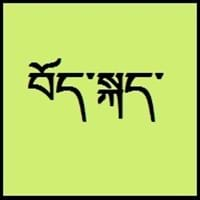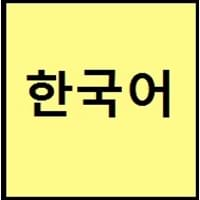Countries
China, Nepal
China, Jilin Province, North Korea, South Korea, Yanbian
National Language
Nepal, Tibet
North Korea, South Korea
Second Language
Not spoken in any of the countries
Not spoken in any of the countries
Speaking Continents
Asia
Asia
Minority Language
China, India, Nepal
Japan, People's Republic of China, Russia, United States of America
Regulated By
Committee for the Standardisation of the Tibetan Language
The National Institute of the Korean Language
Interesting Facts
- Tibetan dialects vary alot, so it's difficult for tibetans to understand each other if they are not from same area.
- Tibetan is tonal with six tones in all: short low, long low, high falling, low falling, short high, long high.
- Korean has borrowed words from English and Chinese.
- Korean has two counting systems. First, is based on Chinese characters and numbers are similar to Chinese numbers, and second counting system is from words unique to Korea.
Similar To
Not Available
Chinese and Japanese languages
Derived From
Not Available
Not Available
Alphabets in
Tibetan-Alphabets.jpg#200
Korean-Alphabets.jpg#200
Scripts
Tibetan alphabet, Tibetan Braille
Hangul
Writing Direction
Left-To-Right, Horizontal
Left-To-Right, Horizontal, Top-To-Bottom
Hello
བཀྲ་ཤིས་བདེ་ལེགས། (tashi delek)
안녕하세요. (annyeonghaseyo.)
Thank You
ཐུགས་རྗེ་ཆེ་། (tujay-chay)
감사합니다 (gamsahabnida)
How Are You?
ཁྱེད་རང་སྐུ་གཇུགས་བདེ་པོ་ཡིན་པས།
(kayrang kusu debo yimbay?)
어떻게 지내세요? (eotteohge jinaeseyo?)
Good Night
གཟིམ་ལཇག་གནང་དགོས་། (sim-jah nahng-go)
안녕히 주무세요 (annyeonghi jumuseyo)
Good Evening
དགོང་དྲོ་བདེ་ལེགས།
안녕하세요 (annyeonghaseyo.)
Good Afternoon
ཉིན་གུང་བདེ་ལེགས།
안녕하십니까 (annyeong hashimnikka)
Good Morning
སྔ་དྲོ་བདེ་ལེགས། (nga-to delek)
안녕히 주무셨어요 (An-yŏng-hi ju-mu-shŏ-ssŏ-yo)
Please
thu-je zig / ku-chee.
하십시오 (hasibsio)
Sorry
ཀོང་དགས་། (gawn-da)
죄송합니다 (joesonghabnida)
Bye
ག་ལེར་ཕེབས་། (kha-leh phe)
안녕 (annyeong)
I Love You
ང་ཁྱེད་རང་ལ་དགའ་པོ་ཡོད་ (nga kayrâng-la gawpo yö)
당신을 사랑합니다 (dangsin-eul salanghabnida)
Excuse Me
དགོངས་དག བཟོད་དུ་གསོལ། ཐུགས་རྗེ་གཟིགས།
실례합니다 (sillyehabnida)
Dialect 1
Central Tibetan
Jeju
Where They Speak
China, India, Nepal
South Korea
Dialect 2
Khams Tibetan
Gyeongsang
Where They Speak
Bhutan, China
South Korea
Dialect 3
Amdo Tibetan
Hamgyŏng
Where They Speak
China
China, North Korea
How Many People Speak
Not Available
Speaking Population
Not Available
Native Name
བོད་སྐད་ (pö-gay)
한국어 (조선말)
Alternative Names
Bhotia, Dbus, Dbusgtsang, Phoke, Tibetan, U, Wei, Weizang, Zang
Hanguk Mal, Hanguk Uh
French Name
tibétain
coréen
German Name
Tibetisch
Koreanisch
Pronunciation
Not Available
Not Available
Ethnicity
tibetan people
Koreans
Origin
c. 650
Before 1st century
Language Family
Sino-Tibetan Family
Koreanic Family
Subgroup
Tibeto-Burman
Not Available
Branch
Not Available
Not Available
Early Forms
Old Tibetan, Classical Tibetan
Old Korean, Middle Korean and Korean
Standard Forms
Standard Tibetan
Pluricentric Standard Korean, South Korean standard and North Korean standard
Language Position
Not Available
Signed Forms
Tibetan Sign Language
Korean Sign Language
Scope
Not Available
Individual
ISO 639 6
Not Available
Not Available
Glottocode
tibe1272
kore1280
Linguasphere
No data Available
45-AAA
Language Type
Not Available
Living
Language Linguistic Typology
Not Available
Subject-Object-Verb
Language Morphological Typology
Not Available
Agglutinative
Tibetan and Korean Speaking population
Tibetan and Korean speaking population is one of the factors based on which Tibetan and Korean languages can be compared. The total count of Tibetan and Korean Speaking population in percentage is also given. The percentage of people speaking Tibetan language is Not Available whereas the percentage of people speaking Korean language is 1.14 %. When we compare the speaking population of any two languages we get to know which of two languages is more popular. Find more details about how many people speak Tibetan and Korean on Tibetan vs Korean where you will get native speakers, speaking population in percentage and native names.
Tibetan and Korean Language Codes
Tibetan and Korean language codes are used in those applications where using language names are tedious. Tibetan and Korean Language Codes include all the international language codes, glottocodes and linguasphere.





